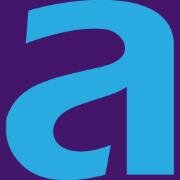The Age of Digital Therapeutics— Golden or Not Quite Yet?
Digital therapeutics offer an innovative approach to managing medical conditions and are gaining market traction, especially among health systems. So far, there are over 250 digital care products and tools in development, 150 of which are commercially available. Data associated with these products are also becoming more robust, with thousands of studies published since 2,700 and almost 1,500 published in the past 5 years. However exciting, these products have raised more questions regarding cost and benefits to patients..
According to an IQIVIA report, there are over 350,000 health-related mobile applications available on top app stores, with approximately 250 apps being added every day. Many large pharma companies have also shifted part of their business to the digital health space. Some examples include smartpatient by Novartis educating patients on wet macular degeneration (AMD) treatment and management or NuvoAir by Roche that lets cystic fibrosis patients conduct lung assessments at home.
While most digital health apps have a direct-to-consumer approach by targeting the end users, the COVID-19 pandemic has opened the doors to more commercialization methods such as value-based contracting, “device-like” reimbursement, and “drug-like” reimbursement models. These offerings from employers could provide members with more convenient tools to maintain their wellbeing and mental health during the social-distancing period and beyond.
So what are ways digital health apps may be purchased or reimbursed?
Direct-to-consumer
As the name suggests, this is when a member downloads an app on their device and pays a subscription fee directly to the app developers. These apps could offer disease management features, and some health plans allow members to pay with their HSA or FSA cards.
Value-based contracting
With this method the app manufacturers negotiate a contract with the payers for reduced costs if certain health outcomes are met due to the use of the app. The payers may require a pilot period or specific cost-benefit analyses before adopting.
Device-like reimbursement
In this case, the app is covered under the medical benefit and members pay co-insurance, similar to paying for other traditional medical services they receive from health care providers.
Drug-like reimbursement
This reimbursement model allows app manufacturers to negotiate with payers to have the apps added to their pharmacy benefit or a newer concept called “digital formulary.” Like a drug, the app in this reimbursement model would need an identifier similar to an NDC for billing.
As digital health therapeutics data becomes more compelling and exciting, it is important for payers to be aware of the different options available in the market and how these new treatments should be reviewed or covered. However, many barriers still exist that deter digital therapeutics adoption on a large scale. Addressing these barriers could be one of the first steps to increasing member’s access to alternative digital therapies.

